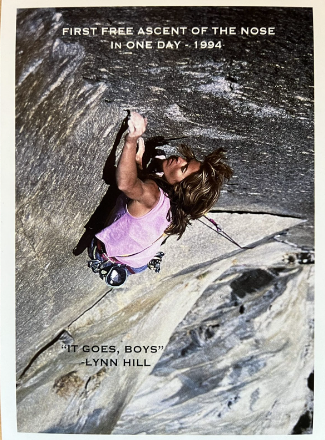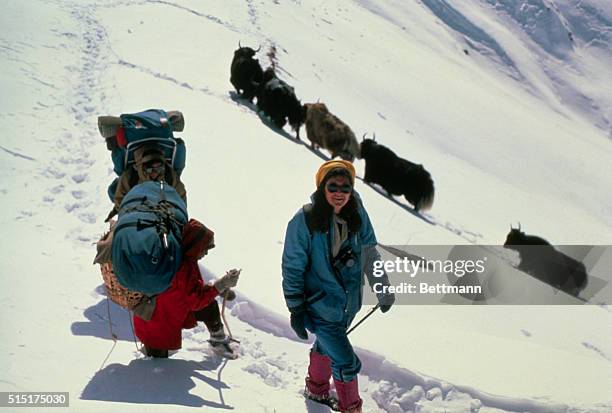Climbing has fascinated humans for centuries, evolving from a necessity for exploration and survival to a highly specialized and competitive sport. This article explores the rich history of climbing, its various disciplines, and its journey to becoming an Olympic sport.
Climbing has ancient roots, with evidence of climbing dating back thousands of years. However, as a modern sport, climbing began to develop in the 19th century in Europe:
In mountaineering, climbing combines with the need to conquer mountain peaks and is one of the oldest forms of climbing. The ascent of Mont Blanc in 1786 by Jacques Balmat and Michel-Gabriel Paccard is often considered the birth of modern mountaineering.
Rock climbing began to emerge as a distinct discipline in the 19th century, with the first documented ascents on the rock formations of the Pennines and the Dolomites.
Climbing Disciplines
Modern climbing is divided into several disciplines, each with its own techniques, equipment, and environments:
- Sport Climbing: Takes place on rock walls equipped with fixed anchors (bolts or pitons).
- Bouldering: Climbing on boulders or low walls without ropes, with crash pads for protection.
- Trad Climbing: Climbing on natural routes without fixed anchors; climbers place removable protection as they ascend.
- Ice Climbing: Climbing on ice formations such as frozen waterfalls or glaciers.
- Deep Water Soloing (DWS): Climbing on rock walls above water, without ropes; falls are cushioned by the water below.
Climbing as an Olympic Sport
The inclusion of climbing in the Olympic Games marks a significant milestone in the sport’s history:
Climbing made its Olympic debut at the Tokyo 2020 Games.
Olympic climbing competitions include three disciplines: speed, lead, and boulder, combined in a unique format.
In speed climbing, athletes compete on a standardized wall to climb in the shortest time possible.
Lead climbing involves athletes scaling a long and complex route, aiming to reach the highest point within a time limit.
In bouldering, athletes tackle a series of short problems on a low wall without ropes, trying to complete as many problems as possible with the fewest attempts.
Climbing has come a long way from its humble origins to Olympic walls, evolving from a necessity for exploration to a highly specialized and competitive sport.
The various disciplines offer a range of challenges that attract enthusiasts of all kinds, while the sport’s inclusion in the Olympic Games has brought climbing into the global spotlight.
Over the years, climbing has seen increasing female participation, with athletes overcoming numerous challenges, breaking gender stereotypes, and developing innovative training methods, leaving a significant impact on the sport.
Pioneering climbers like Annie Peck and Lynn Hill paved the way with their groundbreaking achievements, proving that women could excel at the highest levels. The continuous evolution of techniques and competitions ensures that climbing remains one of the most dynamic and fascinating activities in the world of sports.
Pioneers of Female Climbing

Annie Smith Peck
Annie Smith Peck, born in 1850, is one of the pioneering figures in female climbing. Despite the social limitations of her time, Peck climbed numerous mountains, including the famous Huascarán peak in Peru. Her determination and courage paved the way for future generations of female climbers.

Gwen Moffat
In the 1950s, Gwen Moffat became the first woman to become a professional mountain guide in Britain. Her adventurous life and her book "Space Below My Feet" inspired many women to explore the world of climbing.

Lynn Hill
In the 1980s and 90s, Lynn Hill revolutionized climbing with her extraordinary achievements. She was the first person, male or female, to complete a free ascent of "The Nose" on El Capitan in 1993, demonstrating that women could excel at the highest levels of the sport. A true force of nature.
Challenges Faced by Early Female Climbers
Women who took up climbing in its early years faced a series of physical and social obstacles:
In an era when sports were often male-dominated, female climbers had to fight against gender stereotypes and prejudices, often having to adapt equipment designed for men, which did not always fit their physical needs well. Furthermore, even when they achieved notable milestones, female climbers often did not receive the same recognition as their male counterparts.
Training techniques for climbing have evolved over the years, but early female climbers primarily relied on:
- Field Training: Many early climbers trained directly on the rocks, improving their technique and endurance through practical experience.
- General Physical Conditioning: Strength and endurance exercises were fundamental in preparing the body for the physical challenges of climbing.
- Breathing and Concentration Techniques: The ability to remain calm and focused under pressure was (and is) essential for success in climbing.
Iconic Women Before the Olympic Era
Iconic women before the Olympic era of climbing are pioneering figures who have marked the history of this sport with their exceptional feats and indomitable spirit.
These athletes have overcome numerous obstacles, demonstrating that women could excel in the most challenging aspects of climbing.
Through their achievements, these climbers have not only paved the way for future generations but also helped redefine the boundaries of the possible in the world of climbing.
Their stories are a tribute to determination, courage, and innovation, continuing to inspire climbers worldwide.
Noteworthy among them are Catherine Destivelle and Arlene Blum:

Catherine Destivelle
Catherine Destivelle is one of the most influential climbers of the 80s and 90s. Known for her free solo climbs and expeditions on some of the world's toughest walls, Destivelle has shown incredible skill and bravery.

Arlene Blum
Arlene Blum is famous for leading the first all-female expedition to Annapurna in 1978. Her feat was a milestone for women in climbing, showing that female expeditions could tackle the most challenging mountains.
The achievements of these pioneers have had a lasting impact on the climbing world:
Their feats helped change perceptions of women in climbing, earning respect and recognition for female athletes; the increasing female participation has led to the development of equipment specifically designed for women. Today, women have more opportunities to compete and excel in climbing, both at amateur and professional levels.
Conclusion
Female climbers, with their unwavering determination and limitless courage, have not only conquered inaccessible peaks but also blazed new trails in the heart of humanity. Their indomitable spirit is like a supernova lighting the path for future generations, encouraging them to overcome every obstacle, lift every weight, and reach heights never before imagined. Every move, every step forward, is an anthem to human resilience, a symphony of hope resonating through the valleys and the highest peaks, reminding us that the sky is never out of reach when driven by love and passion for what we do. These modern heroines not only climb the steepest rocks but also surmount the barriers of selfishness and indifference, teaching us that true greatness lies in humility and empathy. Looking up toward the infinite horizon, we understand that every challenge overcome is a step toward realizing how much we can achieve when we unite and support each other. May their journey be a shining beacon for all those who dream of lifting the world with the strength of their hands and hearts.



